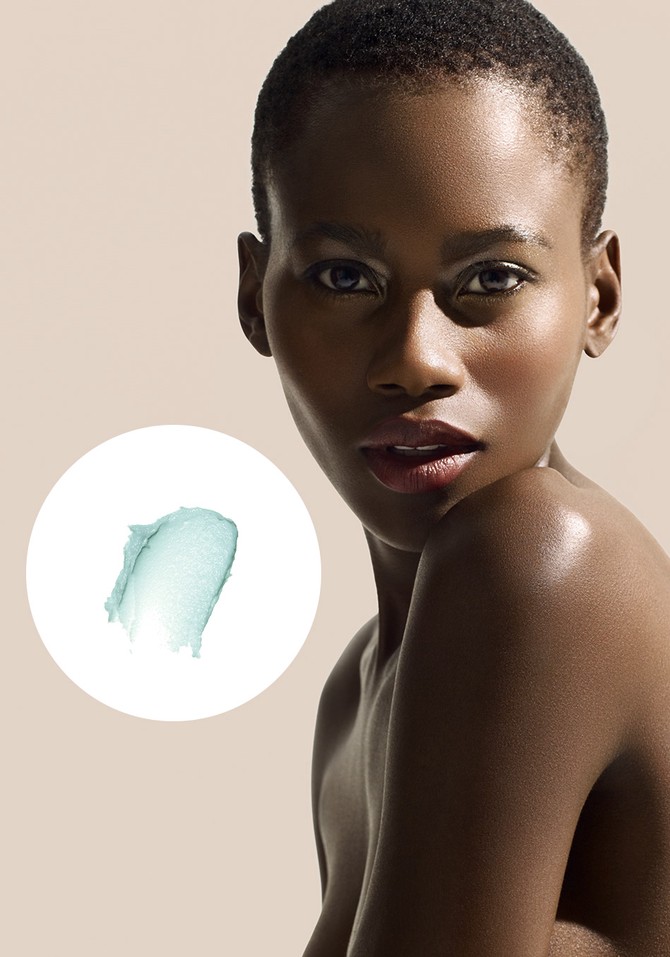The 2-Step Plan for Glowing Skin
From secrets for velvety skin to the smartest advice for shaving and waxing, we've got the info you need to get your body into optimum condition.
Step 1: Exfoliate
Getting supremely supple skin isn't just a matter of slapping on a coat of lotion and calling it a day. First you have to deal with the dead cells that have built up on the skin's surface. Eliminating this debris allows light to reflect evenly off the skin, giving you more glow. It also helps your moisturizer penetrate more deeply, increasing its effectiveness. When it comes to exfoliation, take your pick between two options: physical (like a scrub) and chemical (such as an acid-based lotion).
Let's Get Physical
For an immediate improvement, try a mechanical exfoliant, which works by literally buffing off the layer of dead skin, says Washington, D.C., dermatologist Tina Alster, MD. The options? A loofah, a body polish, or a sugar or salt scrub. You will be unsurprised to learn that in general, softer scrubbing particles are gentler on your skin. Of course, if the scrubber is too soft (think jojoba beads), it's not worth the trouble. So where's the sweet spot? "I think sugar grains are the ideal," says Miami dermatologist Leslie Baumann, MD. Just don't overdo any physical exfoliant: You risk going from dull to irritated.
Chemical Attraction
Chemical exfoliants loosen the bonds that hold skin cells together, says Alster. "As we age, the cells get stickier and the mortar is denser, so cellular buildup is more likely to occur." The best ingredients to tackle the job, according to Baumann, are alpha hydroxy acids, such as glycolic acid, and beta hydroxy acids, like salicylic acid, which is also good for breakouts because it cleans your pores and reduces acne-related inflammation. You can find acids in all kinds of products, but Baumann suggests a lotion or a cream because they are easy to apply and remain on your skin instead of getting rinsed off. When used once or twice a week, chemical exfoliants will produce results in about two weeks to a month, Alster says.
Let's Get Physical
For an immediate improvement, try a mechanical exfoliant, which works by literally buffing off the layer of dead skin, says Washington, D.C., dermatologist Tina Alster, MD. The options? A loofah, a body polish, or a sugar or salt scrub. You will be unsurprised to learn that in general, softer scrubbing particles are gentler on your skin. Of course, if the scrubber is too soft (think jojoba beads), it's not worth the trouble. So where's the sweet spot? "I think sugar grains are the ideal," says Miami dermatologist Leslie Baumann, MD. Just don't overdo any physical exfoliant: You risk going from dull to irritated.
Chemical Attraction
Chemical exfoliants loosen the bonds that hold skin cells together, says Alster. "As we age, the cells get stickier and the mortar is denser, so cellular buildup is more likely to occur." The best ingredients to tackle the job, according to Baumann, are alpha hydroxy acids, such as glycolic acid, and beta hydroxy acids, like salicylic acid, which is also good for breakouts because it cleans your pores and reduces acne-related inflammation. You can find acids in all kinds of products, but Baumann suggests a lotion or a cream because they are easy to apply and remain on your skin instead of getting rinsed off. When used once or twice a week, chemical exfoliants will produce results in about two weeks to a month, Alster says.
From the April 2015 issue of O, The Oprah Magazine


